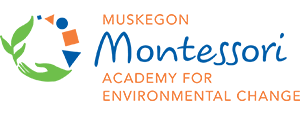How Montessori Works
Dr. Maria Montessori based her method of teaching children on several concepts. All of these concepts are used in varying degrees by different Montessori practitioners.
- Inner guidance. All children have inherent inner directives from nature that guides their development.
- Freedom for self-directed learning. The Montessori method allows children to choose their own activities, which lets children experience self-directed learning.
- Work Centers. The right conditions around children support their natural development. The environment is arranged according to subject area, and children are free to move around the room instead of staying at desks. There is no limit to how long a child can work with a piece of material. At any one time in a day all subjects — math, language, science, history, geography, art, music, etc., will be being studied, at all levels.
- Observation and indirect teaching. This teaching style consists of observing the child engaging in activities that follow their natural instincts. Controlling the environment, not the child, contrasts sharply with the ordinary teacher’s role of implementing a pre-determined curriculum. At Battle Creek Montessori, teachers are striking a balance of following the child’s readiness and interests while also following the state curriculum guidelines.
- Absorbent mind. The young child (0–6) has an absorbent mind which naturally incorporates experiences in the environment directly into its whole basic character and personality for life. This is unique to young children, and allows them to learn many concepts easily. After the age of about six, this absorbent mental faculty disappears. The child then enters the 6-12 year old period where exploration of the world around them and use of imagination are key.
- Multi-age grouping. Children learn from each other in a way that supports their independent self-directed activity. There is constant interaction, problem solving, child to child teaching, and socialization. Children are challenged according to their ability and never bored.
Proven Results
Scientific research has shown that:
- Cognition is optimized when movement is consistent with thinking.
- We learn best when we are interested in what we are learning about.
- Extrinsic rewards reduce motivation and level of performance once the rewards are removed.
- People thrive when they feel a sense of choice and control.
- We learn best when our learning is situated in meaningful contexts.
- Children can learn very well from and with peers; after age six children respond well to collaborative learning situations.
- Children thrive on order, routine, and ritual.
*Angeline Stoll Lillard’s, Montessori: The Science Behind the Genius.
